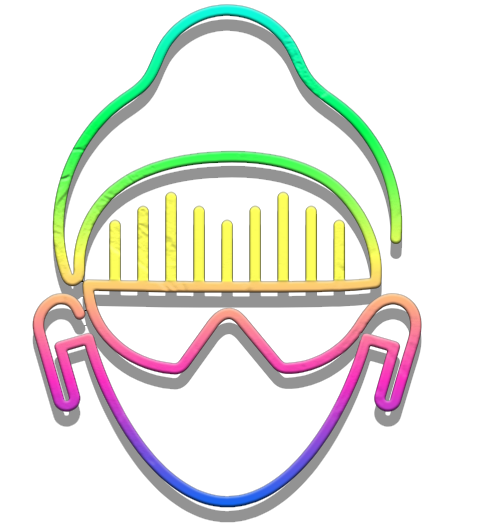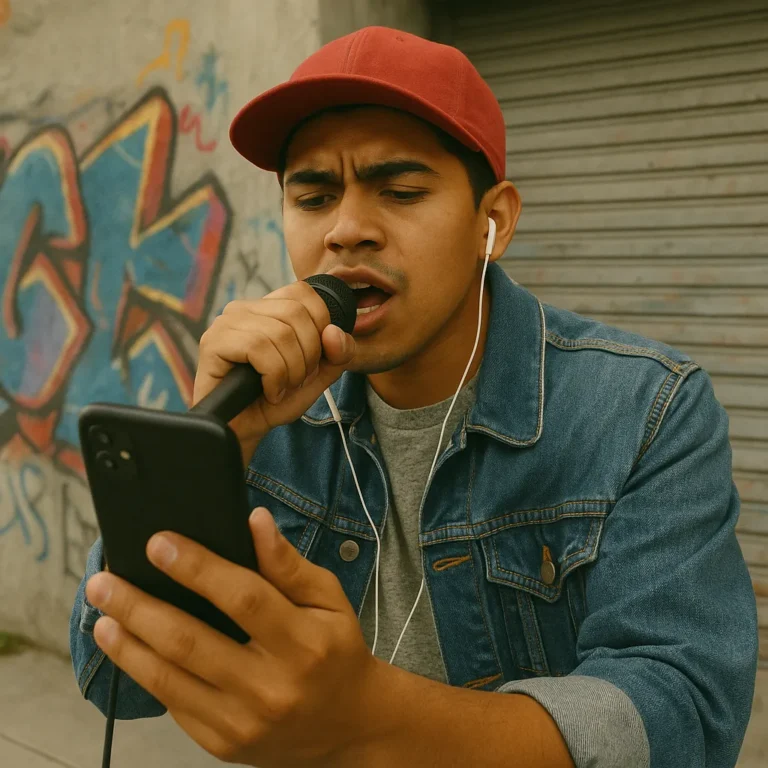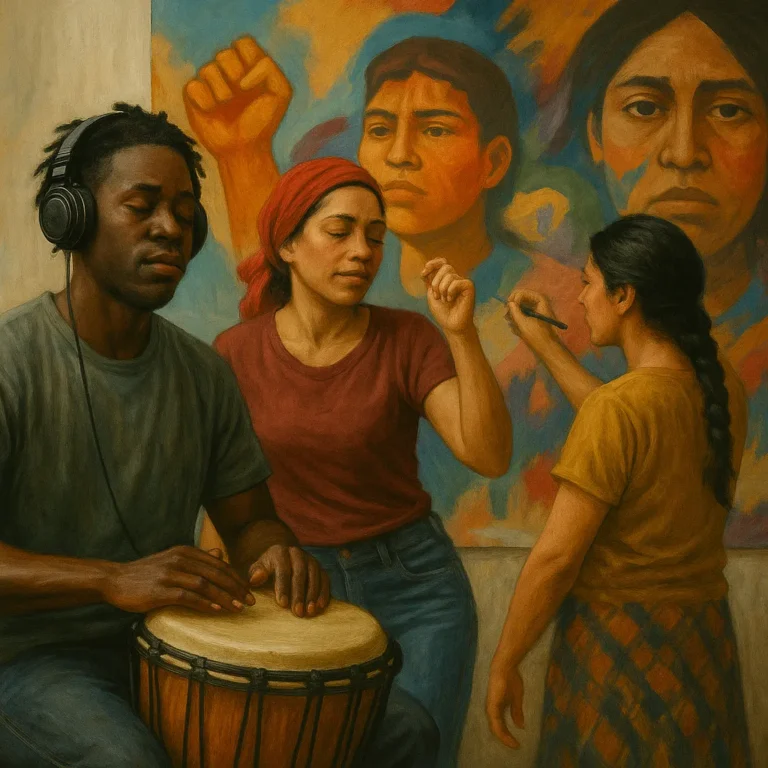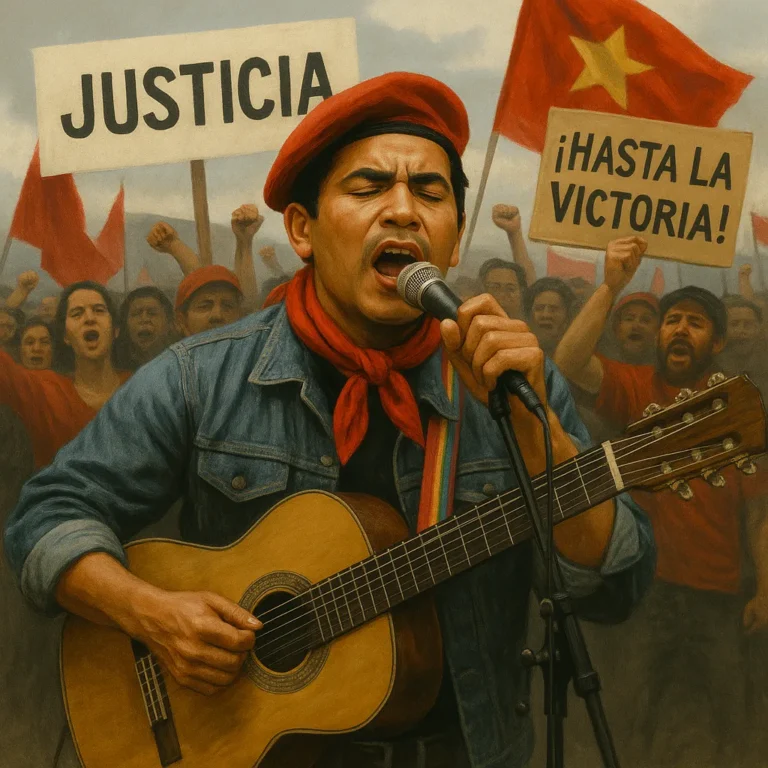Culture on the Edge: Gaming, Music, and the New Aesthetic of Risk
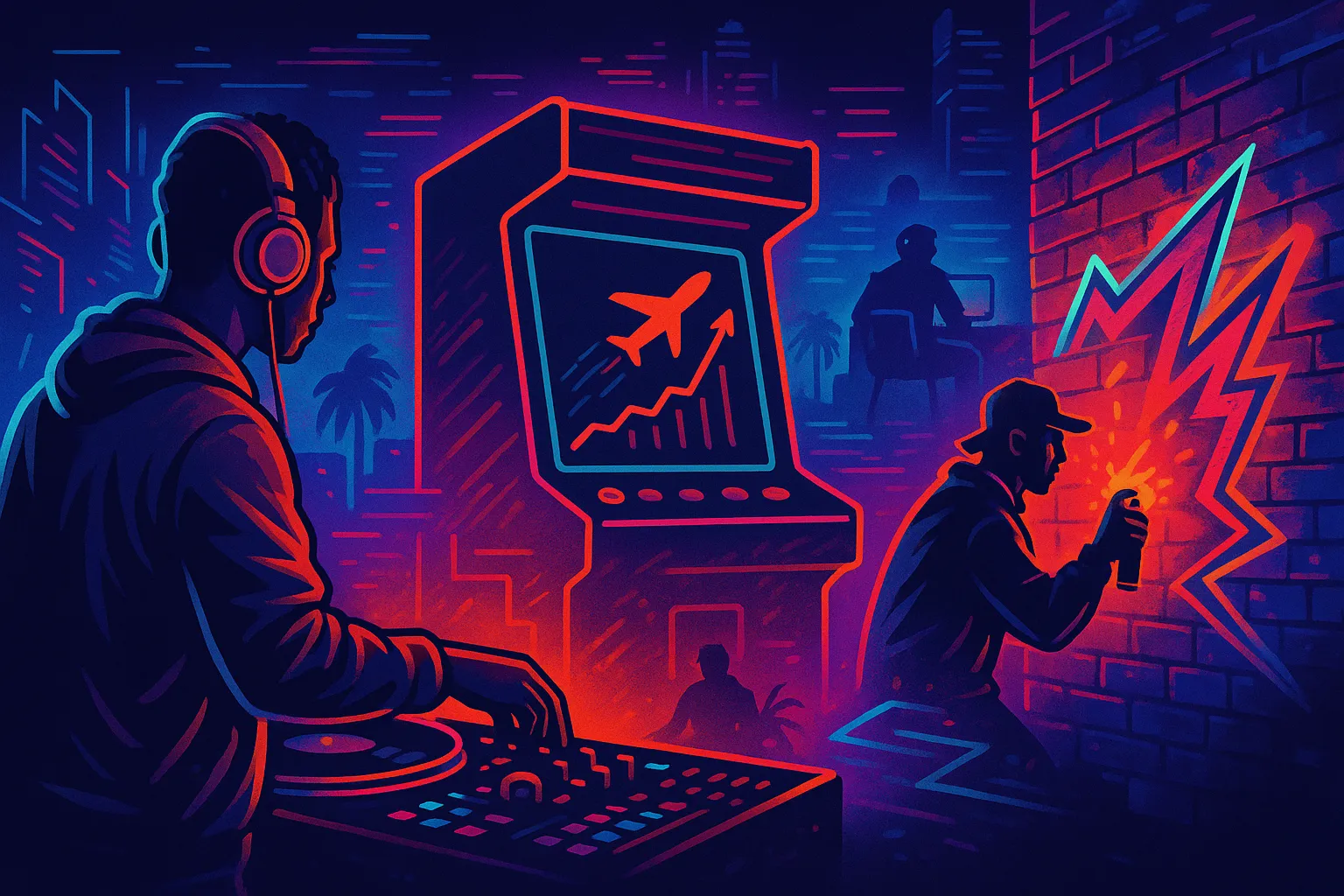
In today’s digital culture, old boundaries are vanishing fast. Genres blur. Platforms merge. A new creative language is emerging — impulsive, visual, and risky. For Latin American youth, this shift isn’t theoretical — it’s happening live, at street level, in the form of glitchy visuals, DJ sets, video games, and NFTs. What used to be paint on concrete or beats in an alley now lives on screens, stages, and blockchains — and the aesthetics of street rebellion have gone digital.
Street Aesthetics in a Digital Skin
From the sidewalks of San José to the back alleys of Medellín, what began as street music now echoes in digital soundscapes. Today’s underground artists don’t just use tech — they build their identity with it. Performances are steeped in visuals pulled from glitch art, vaporwave, and retro gaming. Think neon edges, pixel burns, pulsing frames.
This isn’t about decorating a track. It’s about encoding meaning. These visuals talk to a generation fluent in swipe culture and speed. Sound design now mirrors urban rhythms, but digitally fractured — like concrete cracked by bass. It’s fast, high-risk, immersive — a perfect mirror for youth navigating unstable environments and uncertain futures.
Where Gaming Meets Performance
Go to a Latinx street party today, and you might stumble into an art installation, a poetry slam, or a DJ set that feels more like a video game than a concert. This shift toward interactivity isn’t accidental — it’s cultural evolution. Artists don’t just perform at people. They pull them into the piece.
Here’s how the boundary-breaking format plays out:
- Live sets laced with improvisation — the performer adapts in real time.
- Randomized performance mechanics — no two shows are alike.
- Audience-reactive visuals and sound — the crowd shifts the beat.
The line between game and performance dissolves. What’s left is an experience built on feedback, risk, and co-creation. It’s no longer “watch this.” It’s “play this with me.”
Aviator and the Art of Impulse
One digital artifact stands out: Aviator by Spribe. While it’s a gambling game on the surface, its deeper cultural resonance runs through its design. Imagine a rising red line across a black screen. It pulses. It tempts. It dares you to act — or wait. That’s not just a mechanic. It’s a metaphor.
Why Aviator matters in this space:
| Feature | Cultural Parallel |
|---|---|
| Minimalist visuals | Echo digital art installations |
| High-risk timing | Mirrors the tension of live sets |
| Simple format, intense outcomes | Like DIY music scenes — raw, real, unfiltered |
Aviator doesn’t just look cool. It feels like the street — like betting it all on one beat drop, one move, one moment of public defiance. It’s rhythm as risk. Code as culture.
From NFT Walls to Interactive Covers
The shift from physical streets to virtual spaces hasn’t killed graffiti or protest beats. It’s transformed them. Walls became wallets. Mixtapes became interactive NFTs. Visual rebellion still lives — just now in files and frames.
What today’s Latin digital creators are crafting:
- NFT series laced with ritual iconography
- Music videos with in-game navigation mechanics
- Albums that open like puzzles, not playlists
Digital doesn’t mean disconnected. In fact, it’s often more personal, more charged. These digital spaces let artists embed messages, meanings, and movements. They become both shield and sword — a place to survive, to signal, to say what can’t be said out loud.
The Future Lives at the Crossroads
For decades, Latin alternative culture has thrived in the in-betweens — between languages, identities, and artforms. Now, those lines are getting even fuzzier. Cultural production has moved to interfaces and mechanics. A glitch is now a brushstroke. A game engine is now a stage.
This new frontier doesn’t just remix the past. It reinvents expression. It turns spectators into players, players into creators, and risk into language.
What’s next?
Probably something you can’t pin down — a party that’s also a protest, a game that’s also a prayer, a beat that’s also a story. The lines are gone. The edge is everywhere.
